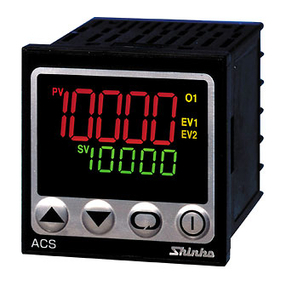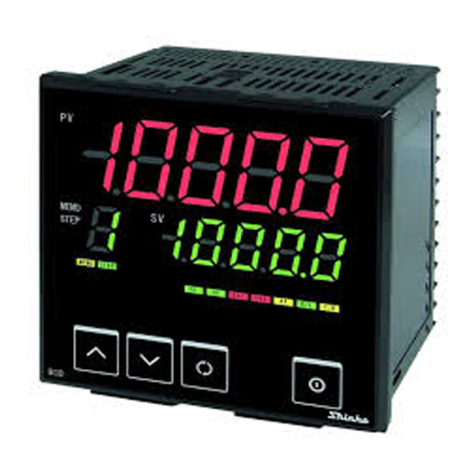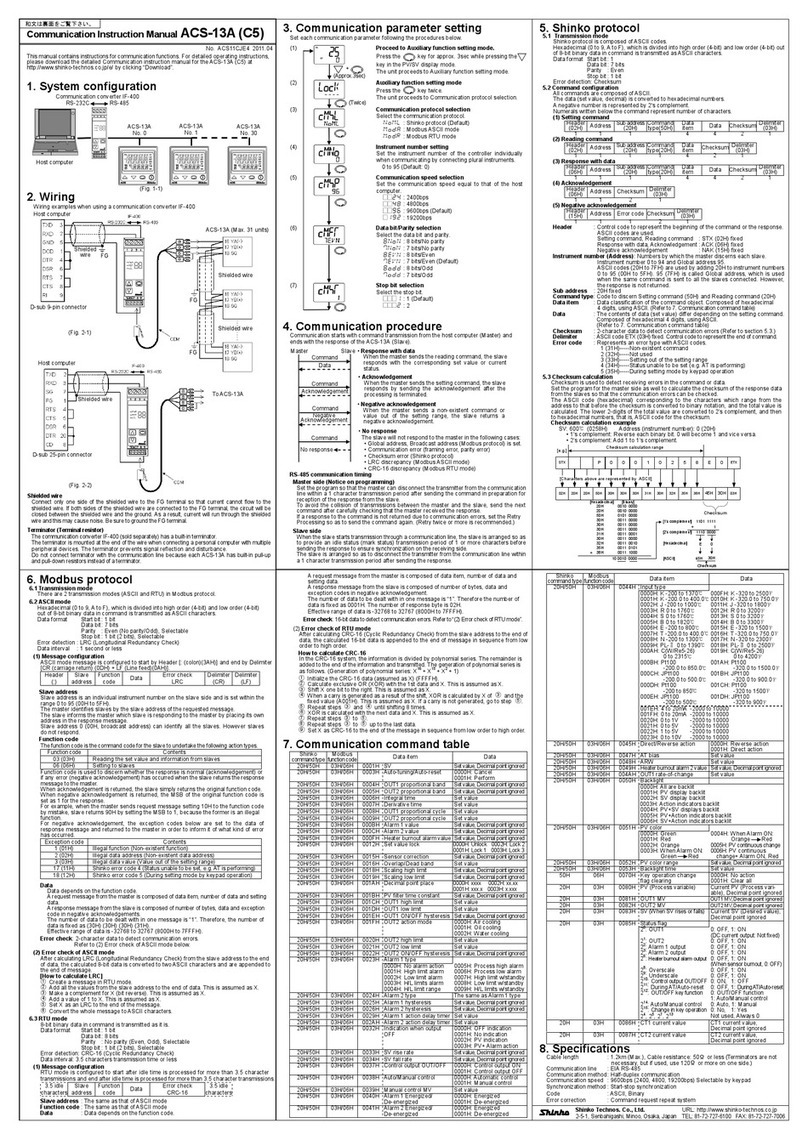
3.6 Control output OFF function
Character Name, Descriptions
Control output OFF function
•This is the function to switch the control output OFF even if poweris suppliedto the
instrument.
The function is used when required to halt the control action or the FCL-100
is not used in multiple controllers.
"" is indicated on the PV/SV display.
•This function can be selected from any mode or any setting item by pressing
the key for approx. 1 second.
•Once the function is working, it cannot be released even if the power
to the instrument is turned OFF and ON again.
To cancel the function, press the key again for approx. 1 second.
3.7 Output manipulating value display
Character Name, Descriptions
Output manipulating value display
•In the PV/SV display mode, press the key for approx. 3 seconds.
The display will be changed to main setting mode during the process,
however, keep pressing until the output manipulating value is displayed.
(Manipulating value is indicated on the PV/SV display blinking the decimal point.)
If the key is pressed again, the mode will revert to the PV/SV display.
4. Running
After the completion of the mounting to the control panel and wiring connections,
start running in the following manner.
(1) Turn the power supplied to the FCL-100 ON
For approx. 2 seconds after the power is switched ON, the type of sensor is indicated on the
PV/SV display. (Refer to table 3.1-1 and 3.1-2.)
During this time, all outputs and LED indicators are in their OFF status.
After that, the PV/SV display indicates actual temperature.
If SV display is selected in PV/SV display change, the setting value will be indicated.
In the status the Control output OFF function is working, it indicates" " on the PV/SV display.
(2) Input the setting value
Referring to Chapter 3. Operation, input each setting value.
(3) Turn the load circuit power ON.
Starts the control action so as to keep the controlled object at the main setting value.
5. Other functions
(1) Input burnout
[Upscale]
When the thermocouple or RTD is burnt out or the input value rises to the [Rated scale maximum
value + 50 (100 )] or greater, the control output is turned off, and [ ] blinks
on the PV/SV display.
However, when the rated scale maximum value is 999.9, if the input value exceeds 999.9,
[] blinks on the PV/SV display, and the control is performed to 999.9 + 1% of rated scale span.
[Downscale]
In the case of thermocouple input, if the input value falls to -50 (-100 ) or less, the control output
is turned off, and [ ] blinks on the PV/SV display.
In the case of RTD input, if the input value falls to the [Rated scale minimum value -1% of rated scale
span] or less, the control output is turned off, and [ ] blinks on the PV/SV display.
However, when the rated scale minimum value is -199.9, if the input value falls to -199.9 or less,
[] blinks on the PV/SV display, and the control is performed to -199.9 -1% of rated
scale span.
Even in SV display mode, the indication of [ ] in upscale and of [ ] in downscale
have priority over all displays.
(2) Self-diagnostic function
The CPU is monitored by a watchdog timer, and when any abnormal status is found on the CPU,
the controller is switched to warm-up status.
(3) Automatic cold junction temperature compensation (thermocouple input type)
Detects the temperature at the connection terminal between thermocouple and instrument,
and always keeps it on the same status as when the reference junction is located at 0 (32 ).



































